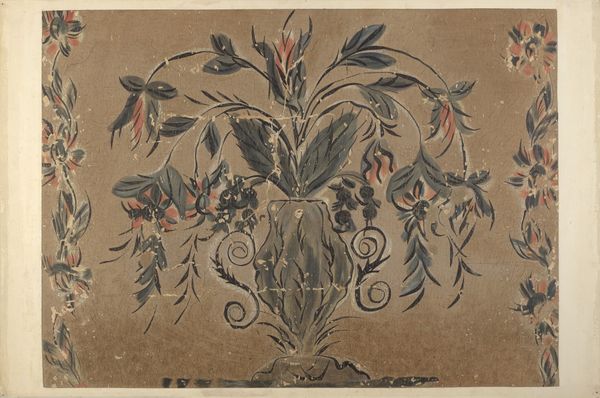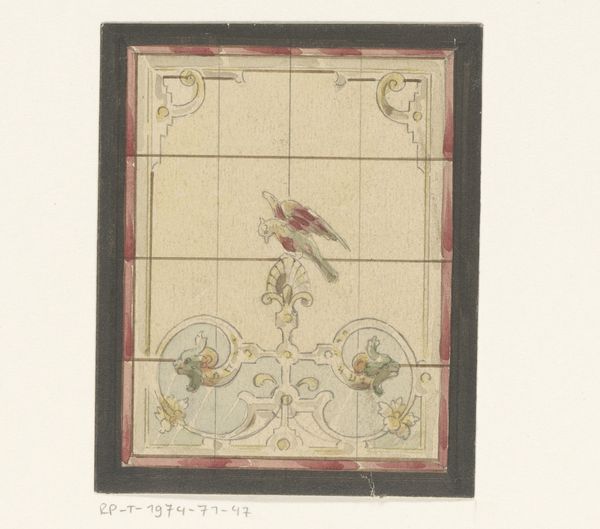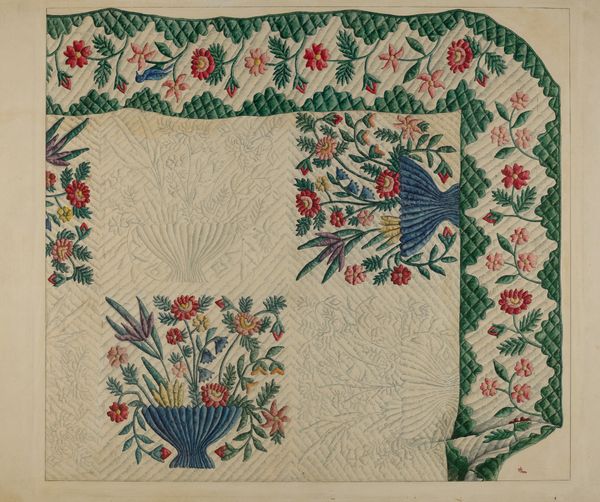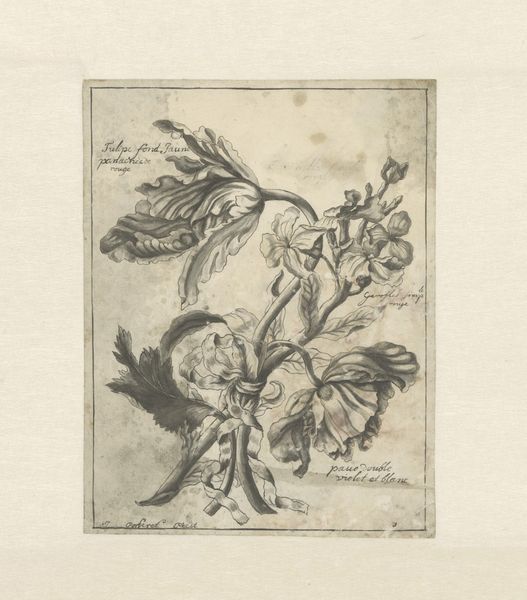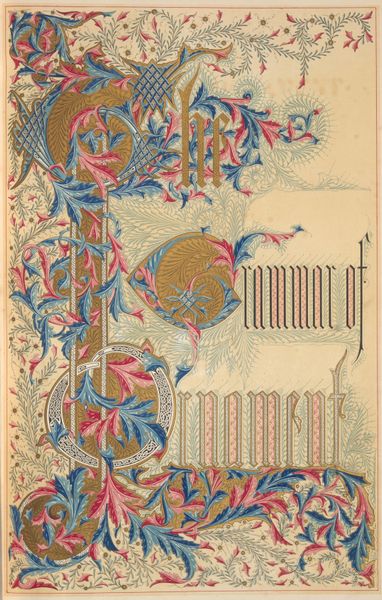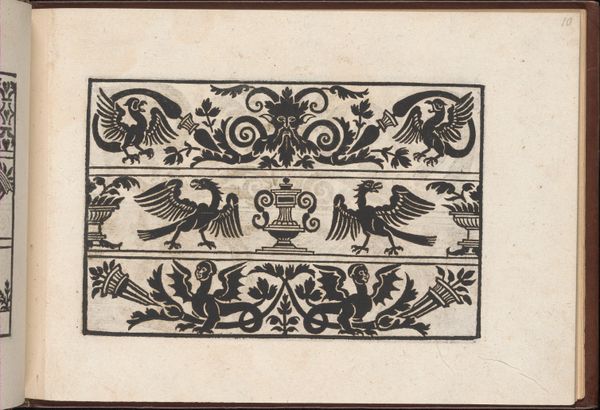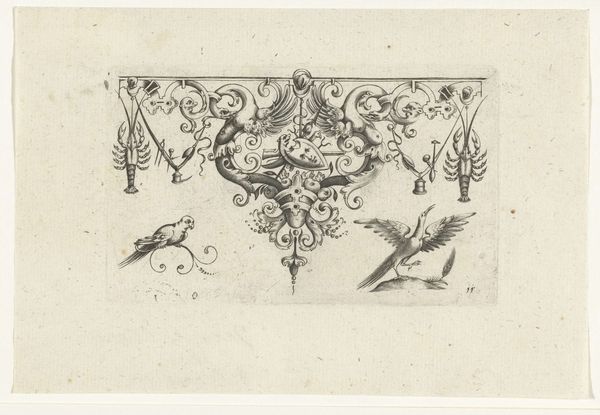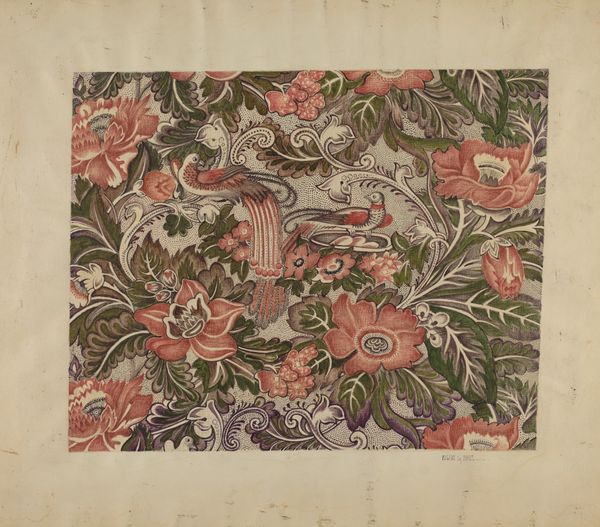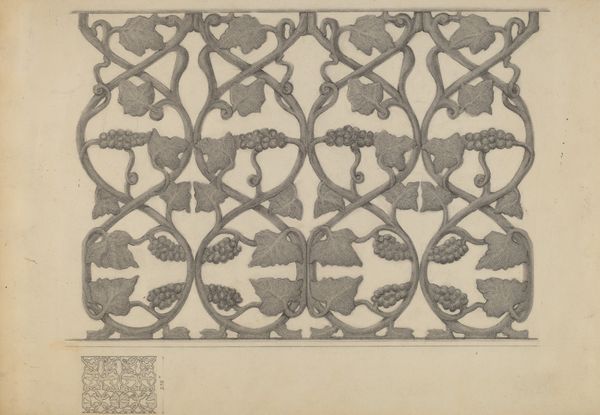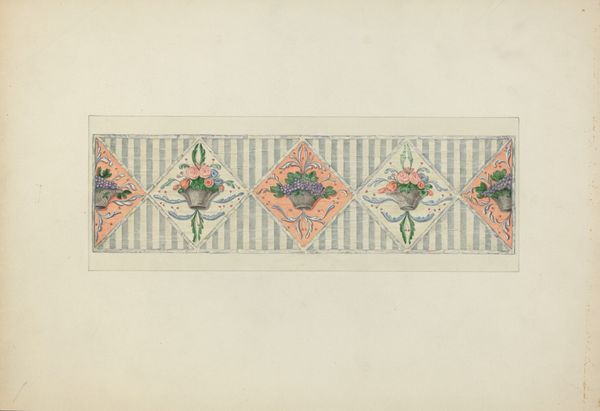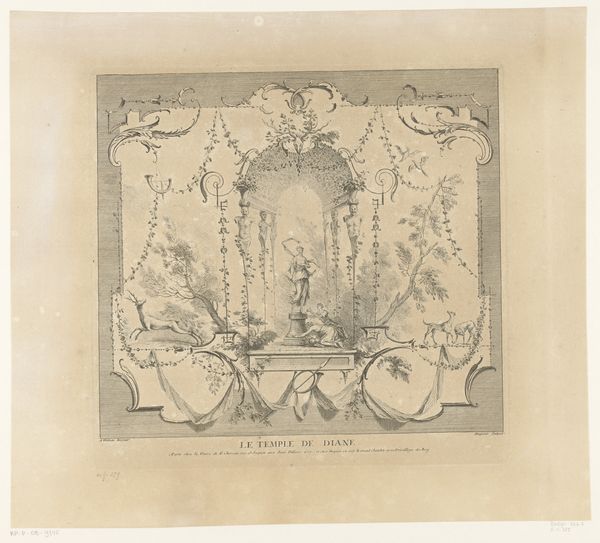
Ornamental design with two birds pecking at fruit c. 1890s
0:00
0:00
drawing, watercolor
#
drawing
#
art-nouveau
#
figuration
#
watercolor
#
decorative-art
#
watercolor
Dimensions: image: 10.7 x 10.6 cm (4 3/16 x 4 3/16 in.)
Copyright: National Gallery of Art: CC0 1.0
Curator: Immediately I am struck by the overall sense of harmony, the carefully balanced composition, even in its unfinished state. It has the feeling of being planned as repeat decorative motif of some kind, and it is beautiful. Editor: Indeed. This is "Ornamental design with two birds pecking at fruit," a watercolor and drawing attributed to Karel Vitezslav Masek, likely dating from the 1890s. It offers us a peek into the aesthetics of the period, particularly the influences of Art Nouveau. Curator: Yes, Art Nouveau— that fascination with nature rendered through almost mathematical pattern. The two birds instantly reminded me of stylized depictions of swallows. They symbolize the coming of spring in many cultures and are historically seen as bringers of good luck or fortune. Editor: Absolutely. The repetition within the design points to a broader social trend, the growth of industrial production and a desire to make beautiful design accessible through mass-produced textiles and wallpapers. Curator: Looking at the imagery, the contrast of dark, almost black, birds amidst the blushing fruit raises some interesting contrasts too. Are they simply feeding or something else entirely? Is it a memento mori—reminding us to seize the day while it lasts, with nature standing for both fecundity and decay? Editor: A potent reading! And it underscores how Art Nouveau sought to elevate design, not just adorn, but to instill particular narratives that reinforce cultural values in private or public spaces. It demonstrates the desire to unite "fine" and applied arts to benefit both commerce and the broader public good. Curator: On closer inspection, it appears to be a preliminary drawing that was intended to be painted with watercolor; there's the pencil line showing through, that suggests to me this object itself also embodies progress: of a vision becoming realized through skilled execution and mass dissemination Editor: Precisely, what's interesting too is the unfinished upper segment that further reinforces a narrative: revealing its genesis reminds us the degree to which aesthetics also represent values and power structures. Curator: Thank you. Thinking of this ornamental design and what we can interpret in it, helps me to look at art history in unexpected ways. Editor: Indeed, examining decorative arts provides crucial social, cultural, and artistic context that sometimes painting alone does not offer. It really provides insights into everyday life.
Comments
No comments
Be the first to comment and join the conversation on the ultimate creative platform.
